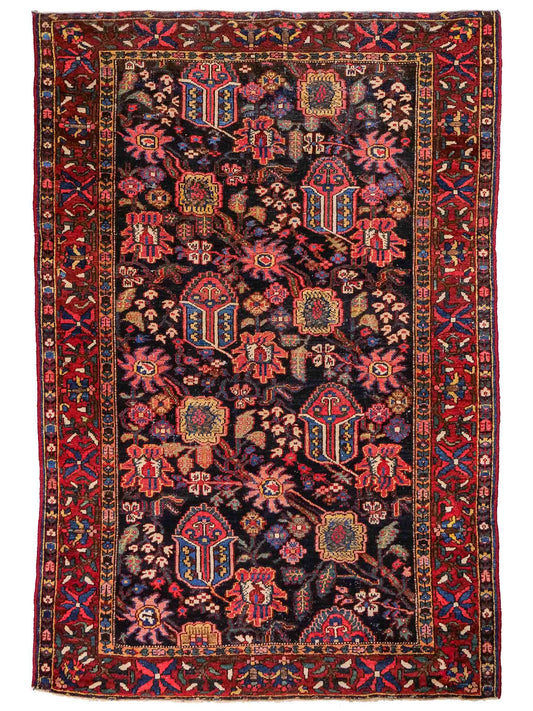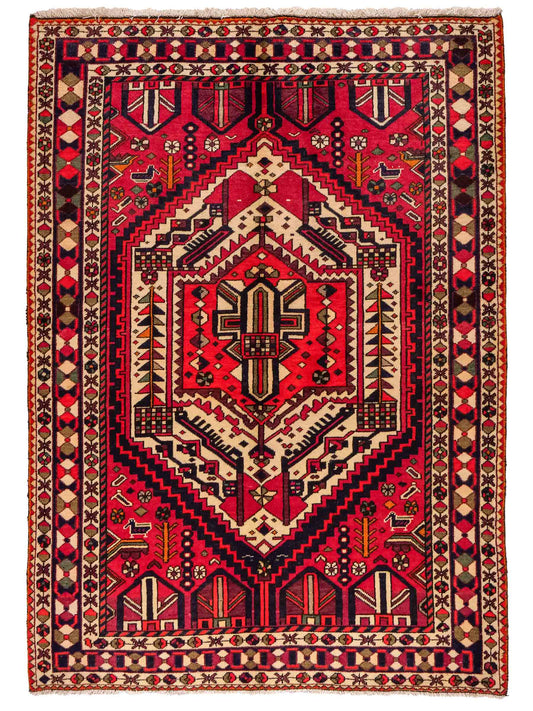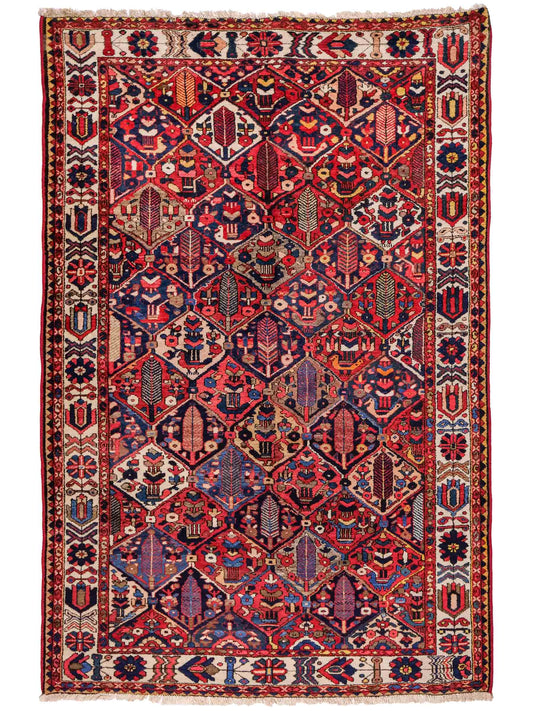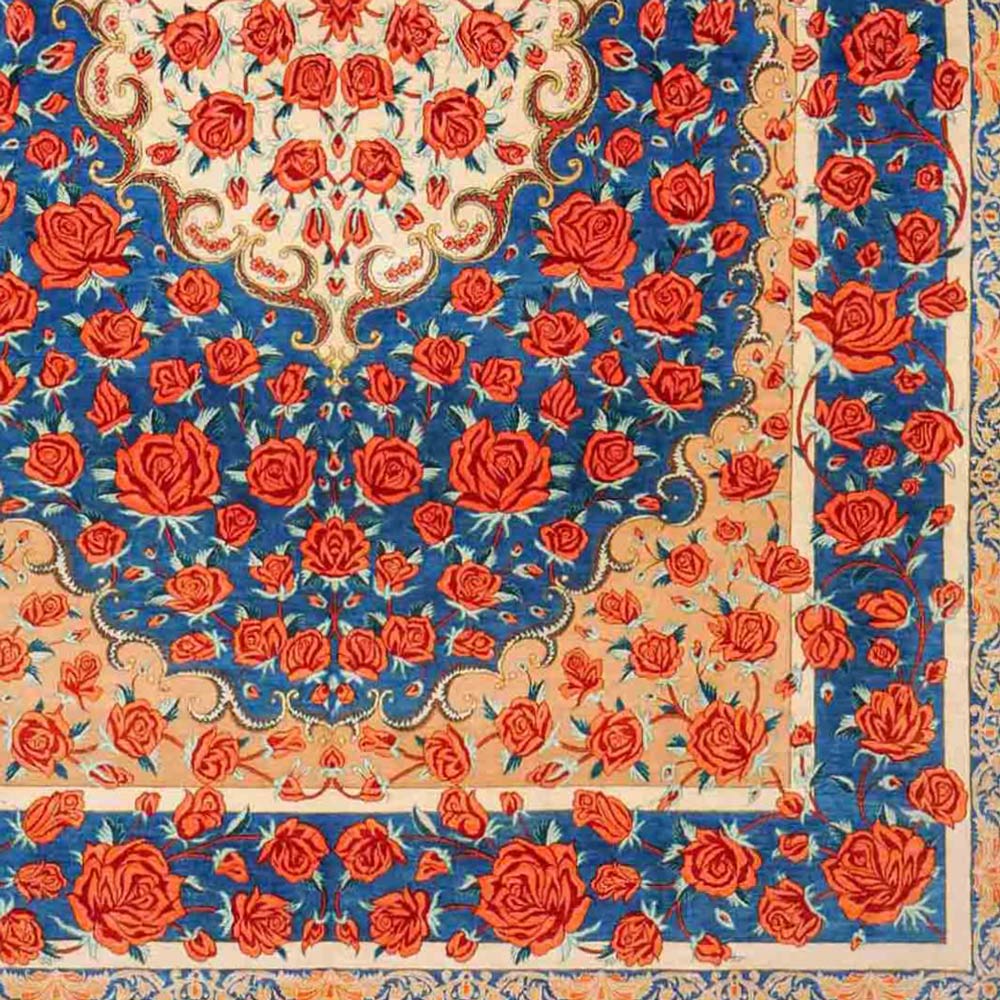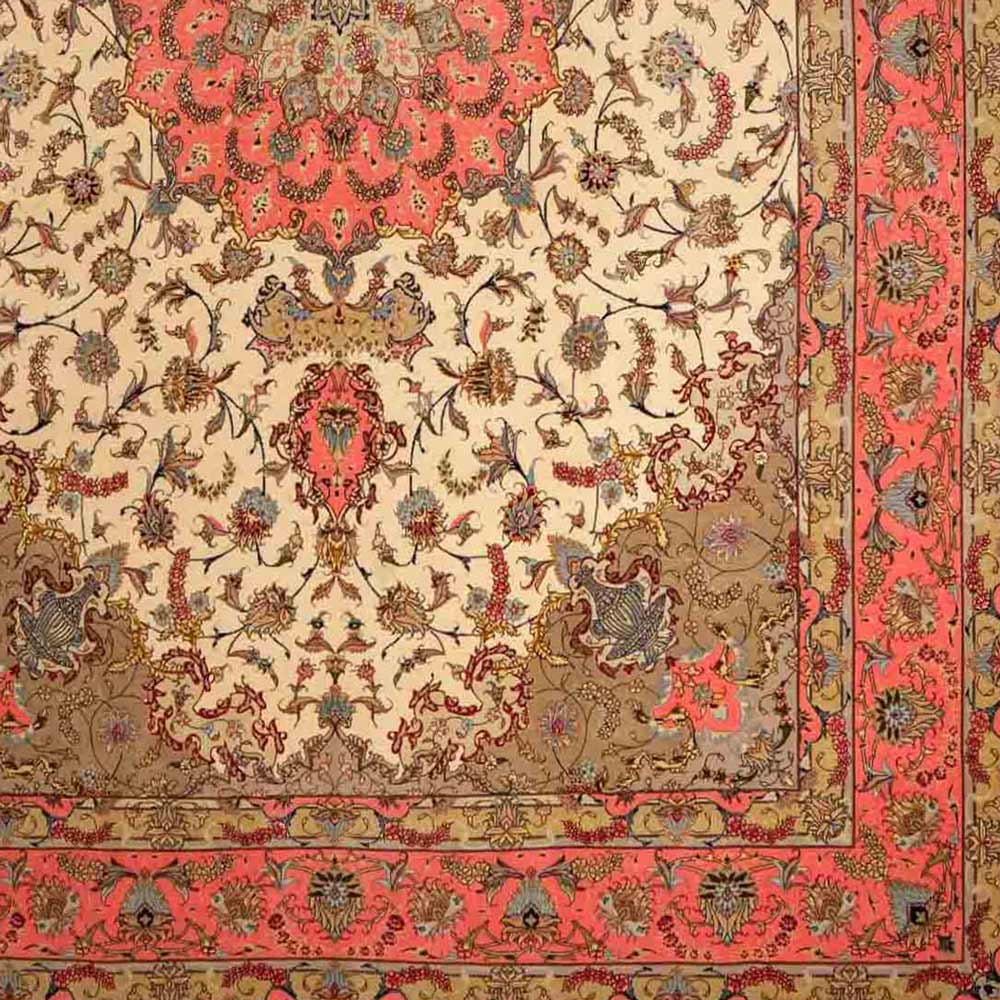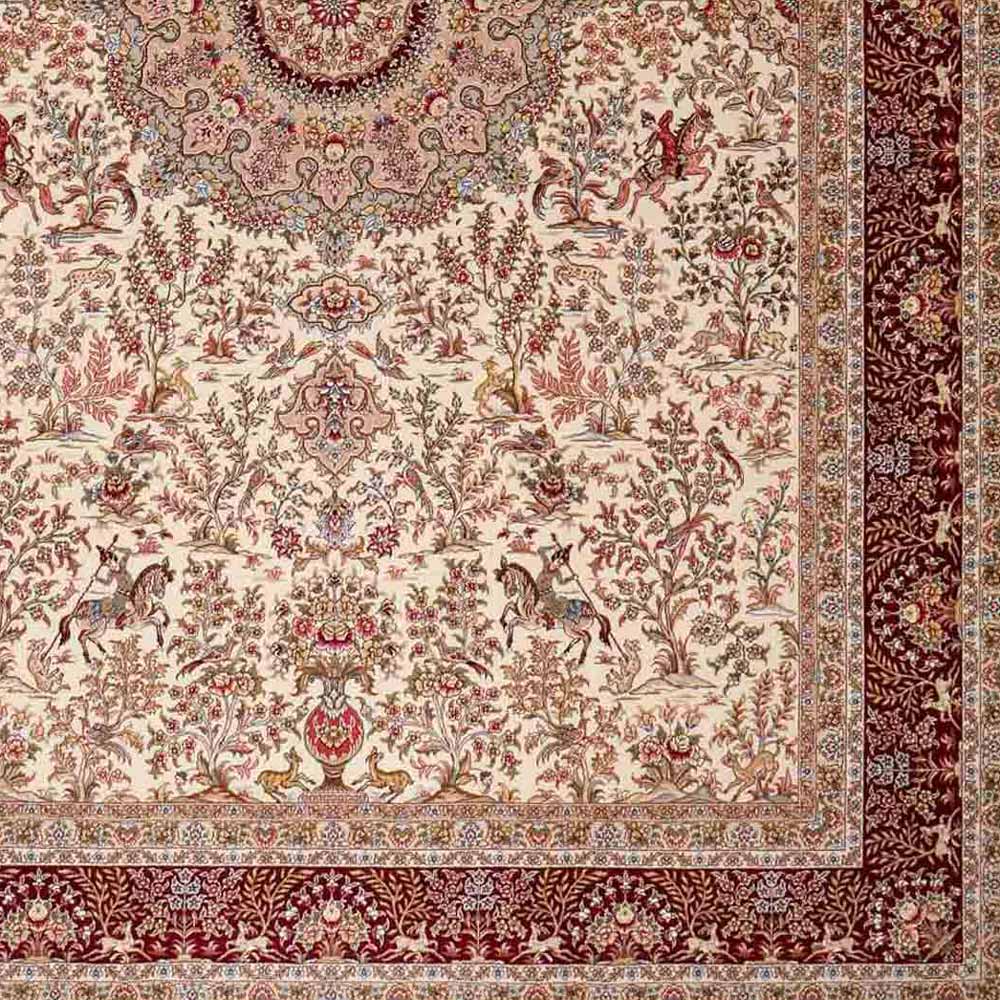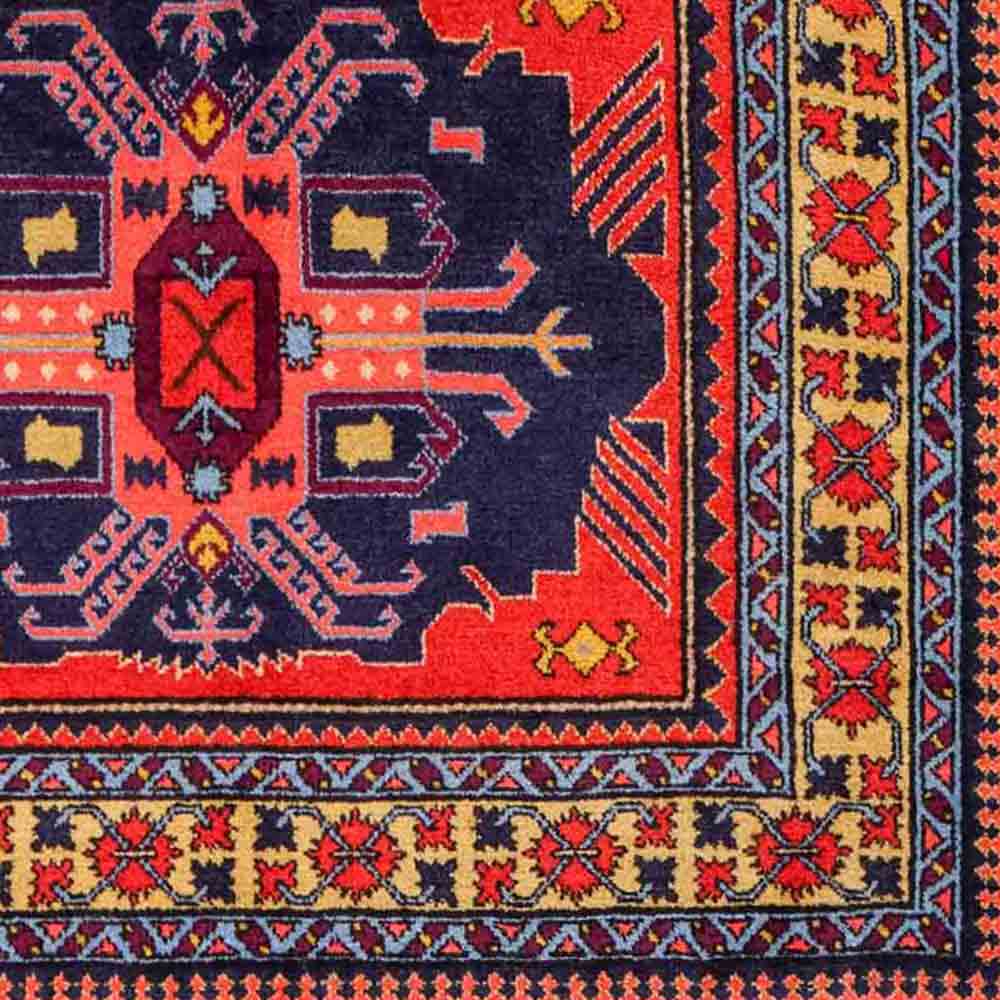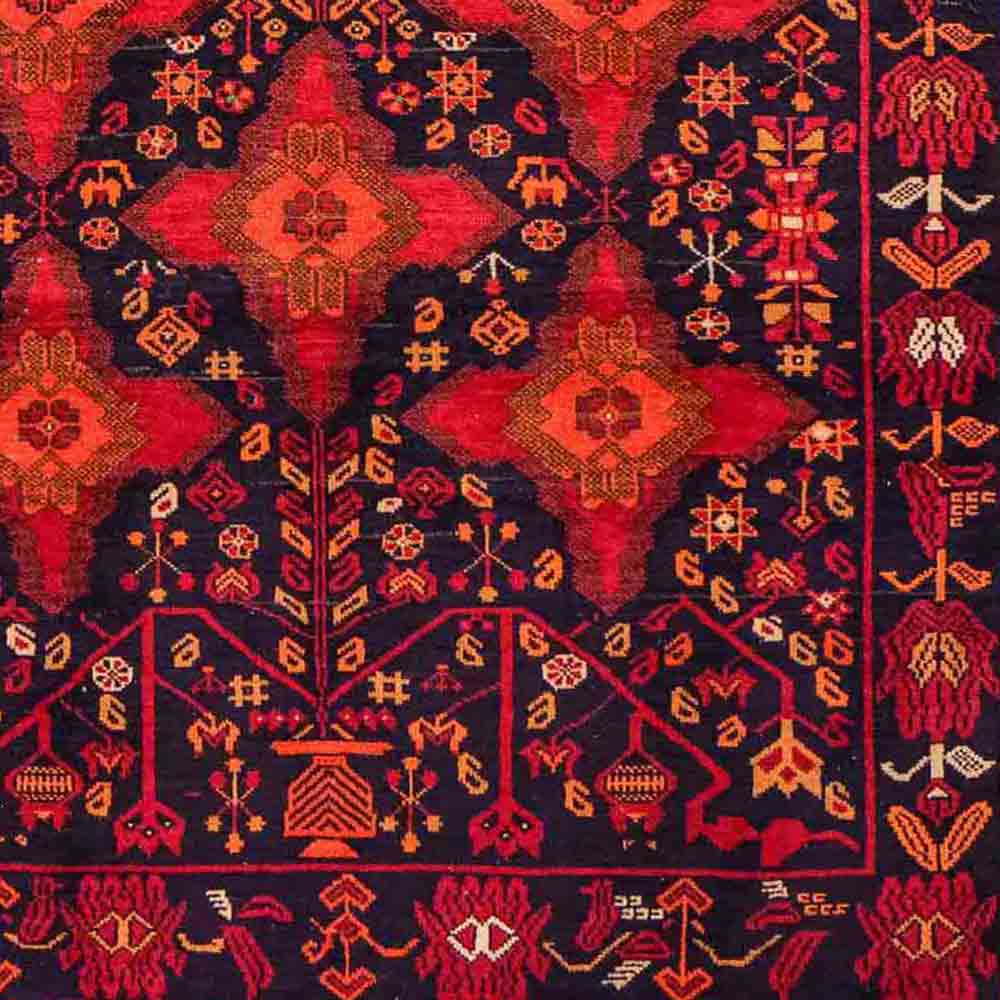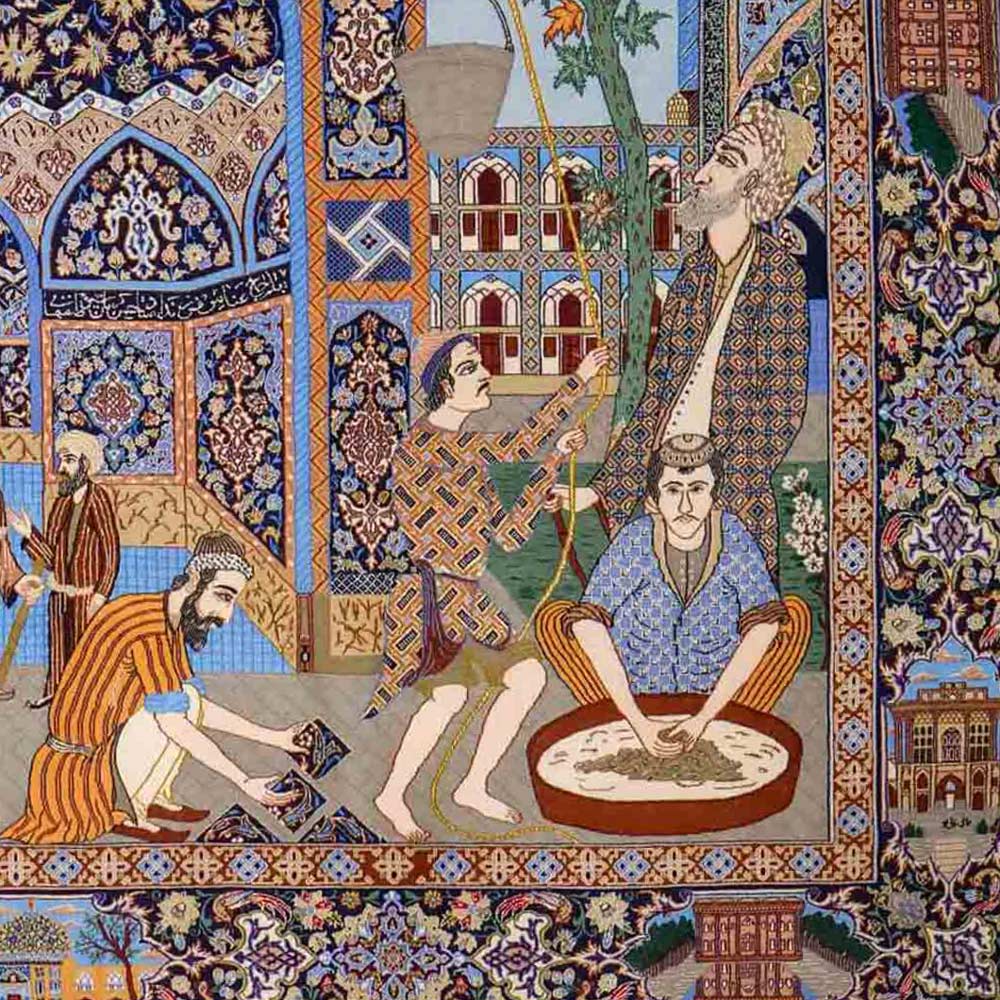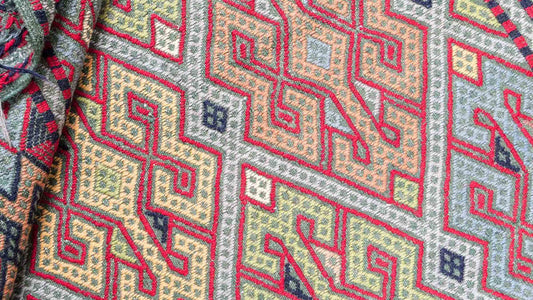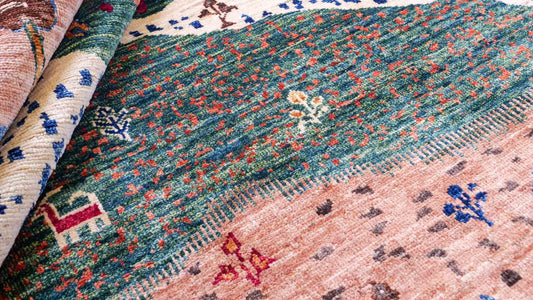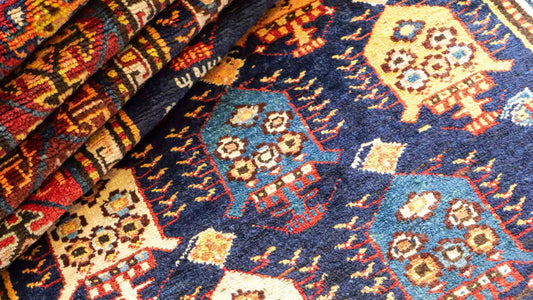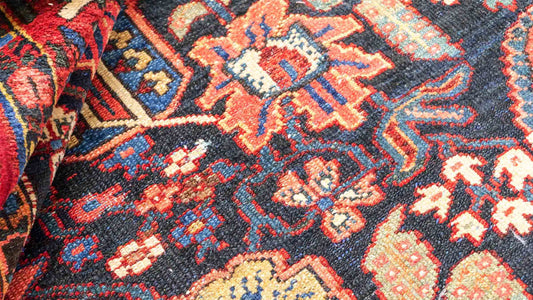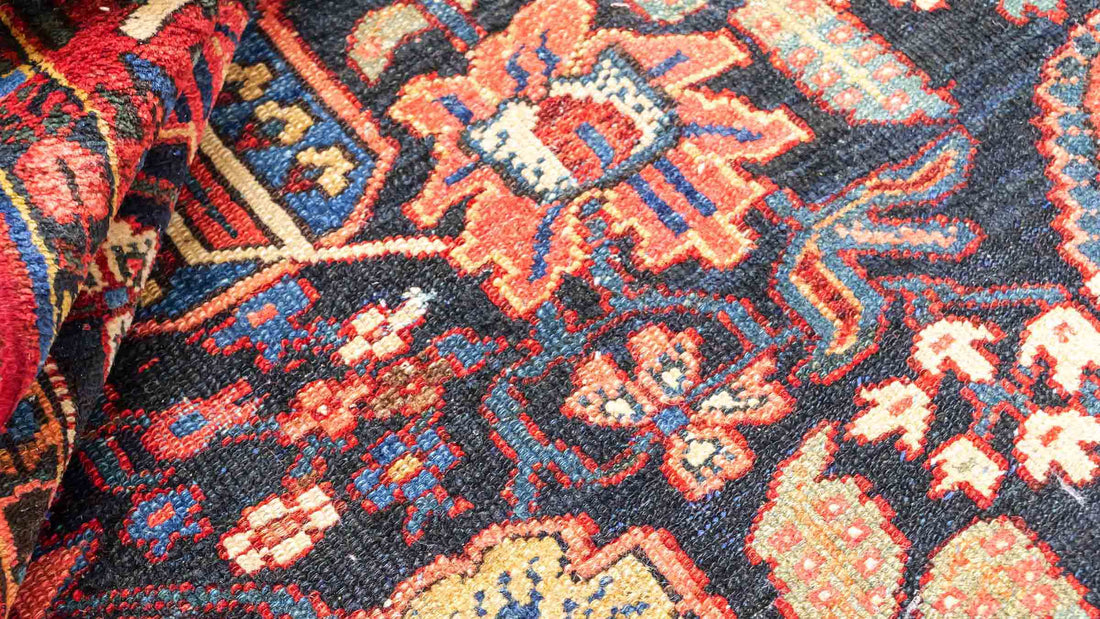
Bakhtiar
Daniel KhademiBakhtiar rugs represent a unique blend of traditional nomadic artistry, distinctive designs, and authentic craftsmanship. Each piece tells stories from the Bakhtiari region, bringing cultural richness and lasting beauty into your home. Discover what makes genuine Bakhtiar rugs special, how to find the perfect original, and how an authentic Bakhtiar can add depth and character to your interior style.
Bakhtiar Rugs: Key Facts at a Glance
- Origin: Bakhtiari mountain region (western Iran, Chaharmahal & Bakhtiari province)
- Material: Premium sheep's wool, sometimes with silk blends, natural plant-based dyes
- Design: Garden motifs (Khesti), medallions, stylized floral, geometric and animal patterns
- Knotting: Hand-knotted, 120,000–300,000 knots/m², exceptionally robust and long-lasting
- Character: Decorative, diverse, solid nomadic work; each piece is unique
- Care: Easy to maintain, colorfast, and durable for generations
- Value: Lasting collectibles, sought-after home accents, investment potential
- Usage: Versatile – for modern, classic, and oriental interiors
Discover Bakhtiar Rugs in our shop or request personal advice to find your ideal original!
Geography, History & Significance
Where Do Bakhtiar Rugs Come From?
Bakhtiar rugs originate from the Bakhtiari region in western Iran, a mountainous area within Chaharmahal and Bakhtiari province. This region is defined by high mountains, fertile valleys, and lively rivers—not only an area of breathtaking landscapes, but also home to the traditional lifestyle of the local nomadic tribes. The Bakhtiaris are known for their traveling skills and their ability to thrive in this rugged environment, which directly influences their rug weaving traditions.
Bakhtiar Rugs Through the Ages
The history of Bakhtiar rugs dates back to the 16th century. Originally woven by Bakhtiari nomads in the surrounding mountains, these rugs gradually gained international acclaim. Trade routes between Persia and Europe made them famous not only throughout Iran but far beyond its borders. Bakhtiar rugs were often enriched by cultural influences from neighboring regions, resulting in a remarkable variety of designs and techniques.
Symbolism, Culture & Social Value
Bakhtiar rugs are symbols of identity, tradition, and pride, and are central to festivals, weddings, and major ceremonies. Rug-making is a way of life for many families, especially women, who pass on their knowledge from one generation to the next. Each rug is an expression of regional pride, creativity, and skill.
Manufacturing & Sustainability
Hand-Knotted Works of Art
Creating a Bakhtiar rug is a sophisticated, multi-stage process requiring considerable skill and patience:
- Wool Sourcing: Wool is sourced from sheep raised in the Bakhtiari highlands. This wool is soft yet strong—ideal for rug making.
- Cleaning & Dyeing: After shearing, the wool is washed and dyed using natural plant and mineral pigments. These eco-friendly techniques ensure the rugs' vivid colors.
- Knotting: Rugs are woven on traditional looms at a density of 120,000–300,000 knots per square meter, giving Bakhtiar rugs their characteristic density and resilience.
- Finishing: After knotting, the rug is trimmed for a uniform surface, loose threads are removed, and the piece receives a thorough final cleaning.
Sustainability & Responsibility
When buying a Bakhtiar rug, pay attention to its origins and production conditions. Choosing rugs from trusted dealers who guarantee fair working conditions and support local communities directly helps preserve this tradition. Learn more about sustainability here: *How Sustainable Are Hand-Knotted Rugs?*
Design Diversity of Bakhtiar Rugs
One of the most striking features of Bakhtiar rugs is their variety of designs and colors. Typical motifs include geometric patterns such as box designs (pers.: Kheshti), stylized floral elements, and animal scenes—each telling its own story. The color palette ranges from earthy neutrals to deep reds and vibrant blues, making it easy to match Bakhtiar rugs with many different interior styles.
Village & Nomadic Rugs Compared: Bakhtiar · Qashqai · Lori · Malayer
| Criteria | Bakhtiar | Qashqai | Lori | Malayer |
| Origin | Western Iran (Isfahan, Chahar Mahal) | Southwest Iran (Fars), nomadic region | Southwest Iran (Luristan) | Western Iran (Malayer, Hamadan) |
| Material | Wool, cotton warp | Wool, cotton warp | Wool, cotton warp | Wool, sometimes silk, cotton warp |
| Knot Density | 120,000–300,000 knots/m² | 80,000–300,000 knots/m² | 100,000–300,000 knots/m² | 150,000–250,000 knots/m² |
| Design | Garden & field motifs, medallion, floral | Tribal, diamonds, animal/flower motifs | Primitive geometry, tribal art | Geometric, floral, medallions |
| Color Palette | Bold contrasts: red, blue, green | Vivid red, blue, yellow, natural | Natural colors, red, brown, orange | Red, blue, earth tones |
| Character | Striking, decorative, substantial | Tribal, lively, expressive | Earthy, authentic, robust | Rustic, detailed, artistic |
| Distinctive Features | Iconic garden & field motifs, nomadic origin | Highly expressive nomadic rugs | Very robust nomadic rugs | Extensive range of village motifs |
| Value/Price Segment | Mid to high | Entry to mid | Entry, very durable | Entry to mid |
Care & Preservation of Bakhtiar Rugs
How to Keep Your Bakhtiar Rug Beautiful for Generations:
- Vacuum regularly, do not beat
- Blot spills immediately with lukewarm water and a soft cloth
- Avoid direct sunlight
- Professional cleaning recommended every 1–2 years
- For more detailed advice, visit our blog post: *How to Care for Hand-Knotted Rugs*
Decorating with Bakhtiar Rugs
Bakhtiar rugs are exceptionally versatile and fit effortlessly into many interior styles. In classic or traditional settings, they enhance a cozy atmosphere in warm colors and floral motifs—pairing beautifully with wood furniture or elegant accessories. In modern or Scandinavian interiors, these rugs create a striking contrast, adding warmth and character to clean lines and soft palettes.
For large living spaces, choose a centrally placed rug to visually anchor the seating area. In dining rooms, a Bakhtiar rug under the table adds comfort and defines the space. In bedrooms, placing a rug at the foot of the bed creates a harmonious finishing touch. Ideally, coordinate your rug’s patterns and colors with cushions, curtains, or wall art to create a cohesive and inviting look.
Value & Investment: A Unique Piece for Life
Bakhtiar rugs offer outstanding value for money. For a relatively modest price, you’ll receive not only a hand-knotted original, but also a robust quality piece to enjoy for many years—one that only gains more character over time. While usually in the lower to mid-price segment and with no guaranteed appreciation, Bakhtiar rugs are admired by collectors the world over. Purchasing one supports local artisans and helps preserve the region's rich cultural traditions.
► For in-depth advice, tips & tricks, see our blog post: *Are Hand-Knotted Rugs a Good Investment?*
Request a free personal style or purchasing consultation for Bakhtiar rugs today!
FAQ – Frequently Asked Questions about Bakhtiar Rugs
What makes Bakhtiar rugs special?
► Distinctive gardenscapes (Khesti), dense, strong wool, intricate knotting, and exceptional durability.
Are Bakhtiar rugs easy to maintain?
► Yes, gentle regular vacuuming and immediate spot cleaning are generally all you need. Always protect from direct sunlight! For more detailed advice, visit our blog post: *How to Care for Hand-Knotted Rugs*
How long do Bakhtiar rugs last with normal use?
► With proper care, they last for decades—often becoming cherished family heirlooms.
Are Bakhtiar rugs a good investment?
► Originals with proven provenance and unique designs are always in demand and tend to hold their value. —read more in our guide: *Are Hand-Knotted Rugs a Good Investment?*
Where can I buy authentic Bakhtiar rugs?
► The best sources are specialist dealers or trusted online shops. At JUPITER Intl, every hand-knotted, hand-tufted, and handwoven rug comes with a Certificate of Authenticity.
Conclusion: A Cultural Masterpiece in Your Home
In summary, Bakhtiar rugs impress not only with their beauty and variety, but are deeply rooted in the culture and history of Iranian craftsmanship. They’re a wonderful way to combine stylish living with cultural heritage. Chosen wisely, well cared for, and with an eye for sustainability, you’ll acquire a unique piece of Iranian culture that brings timeless elegance and history into your home. Choose a Bakhtiar rug—and enjoy both its remarkable looks and the living heritage it represents.
Request your personal consultation or explore our current Bakhtiar Collection now!
Related blogs & blog posts you might also be interested in:
→ Design Classics, Countries of Origin, Carpet Materials, Carpet Guide

